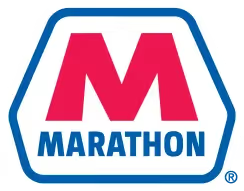Understanding common problems and knowing how to address them can save time, money, and ensure the smooth operation of your facility. Here are some of the most frequent problems encountered with industrial pipes and practical solutions to fix them

Industrial pipes are the backbone of many manufacturing and production processes, facilitating the transportation of various materials. However, like any critical component, they are not immune to issues. Understanding common problems and knowing how to address them can save time, money, and ensure the smooth operation of your facility. Here are some of the most frequent problems encountered with industrial pipes and practical solutions to fix them.
Problem: Corrosion is one of the most prevalent issues affecting industrial pipes, especially those made from metal. It occurs due to chemical reactions between the pipe material and the substances being transported, often exacerbated by environmental factors such as humidity and temperature fluctuations.
Solution:
- Material Selection: Opt for corrosion-resistant materials like stainless steel, PVC, or other specially coated metals.
- Protective Coatings: Apply protective coatings or linings to the interior and exterior surfaces of the pipes.
- Regular Inspections: Conduct frequent inspections to detect early signs of corrosion and address them promptly.
Problem: Blockages can occur due to the accumulation of solid materials, sediment, or biofilm within the pipes, restricting flow and potentially causing pressure buildup.
Solution:
- Filtration Systems: Install filtration systems at key points to prevent large particles from entering the pipes.
- Routine Cleaning: Implement a regular cleaning schedule using chemical cleaners, high-pressure flushing, or mechanical scrubbing.
- Monitoring Systems: Use monitoring systems to detect flow irregularities that may indicate a developing blockage.
Problem: Leaks can arise from various sources, including physical damage, joint failure, or degradation of the pipe material over time. Leaks not only waste valuable resources but can also pose safety hazards.
Solution:
- Quality Installation: Ensure proper installation techniques are used, including secure fittings and joints.
- Leak Detection Systems: Employ leak detection systems to identify and locate leaks quickly.
- Prompt Repairs: Address leaks immediately using appropriate repair methods, such as patching, clamping, or replacing the affected section.
Problem: Pressure problems, such as drops or surges, can disrupt the flow and function of the industrial process, potentially causing damage to the pipes and connected equipment.
Solution:
- Pressure Regulation: Install pressure regulators and relief valves to maintain stable pressure levels.
- Regular Monitoring: Continuously monitor pressure levels using gauges and automated systems to detect and respond to pressure changes swiftly.
- Pipe Sizing:** Ensure pipes are adequately sized for the intended flow rates and pressures to prevent excessive strain.
Problem: Extreme temperatures can cause pipes to expand and contract, leading to material fatigue, cracks, or joint failures.
Solution:
- Thermal Insulation: Apply thermal insulation to pipes to protect them from external temperature variations.
- Flexible Joints: Use flexible joints or expansion joints to accommodate thermal expansion and contraction.
- Temperature Control: Maintain controlled temperatures within the system through heating or cooling mechanisms as needed.
Addressing common problems with industrial pipes proactively can prevent costly downtime and maintain the efficiency of your operations. Regular maintenance, coupled with the right materials and technologies, can significantly extend the lifespan of your piping system. By staying vigilant and prepared, you can ensure that your industrial pipes remain in optimal condition, supporting the seamless function of your facility.tiene menú contextual








